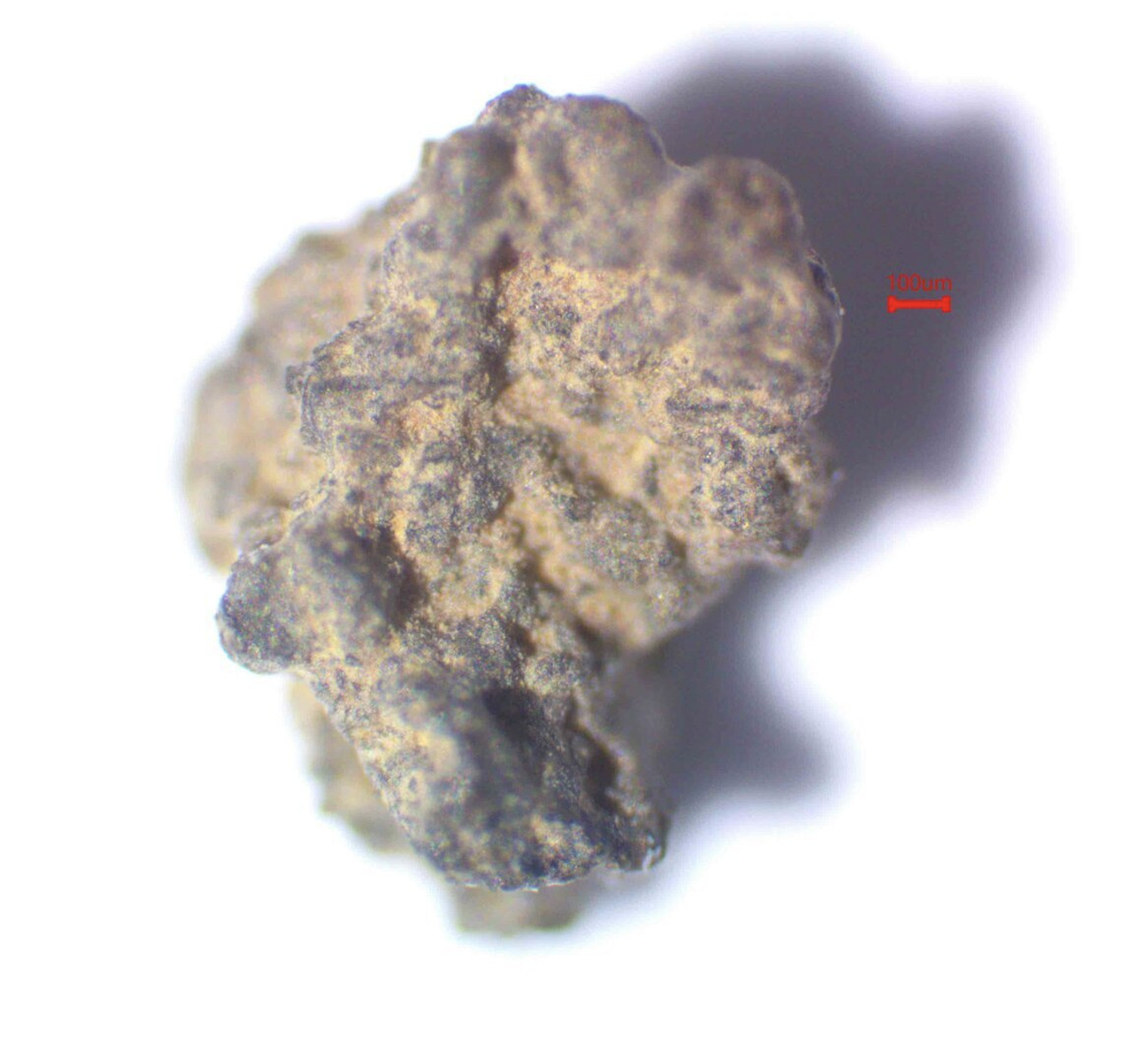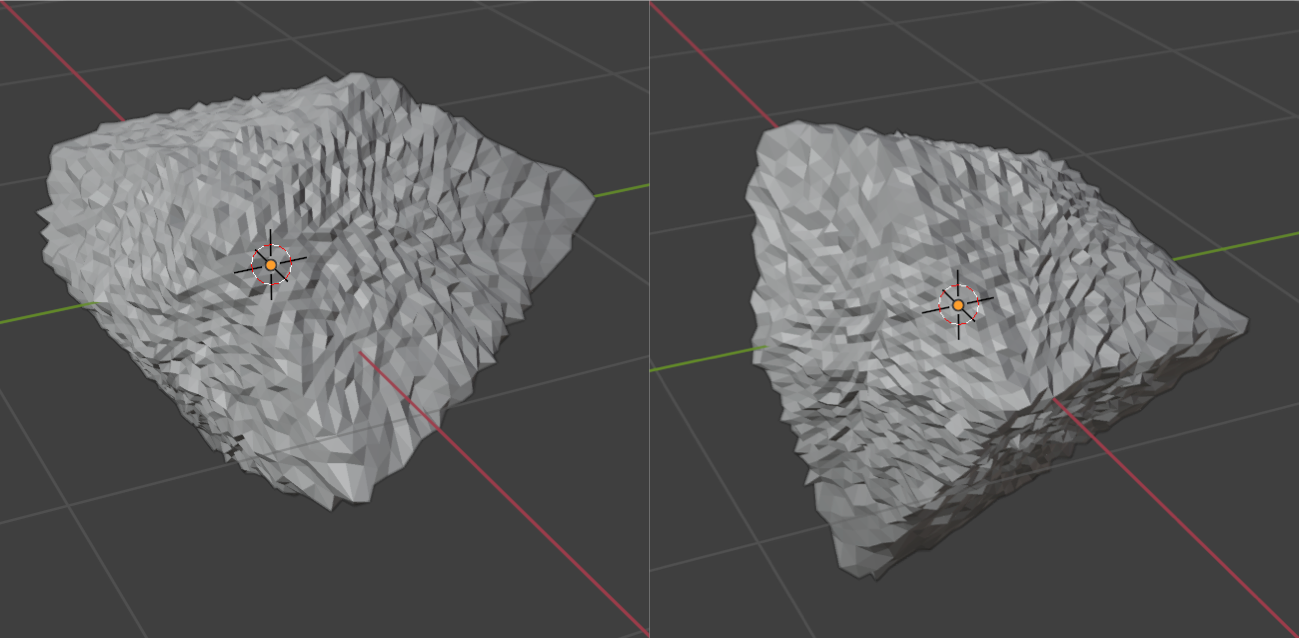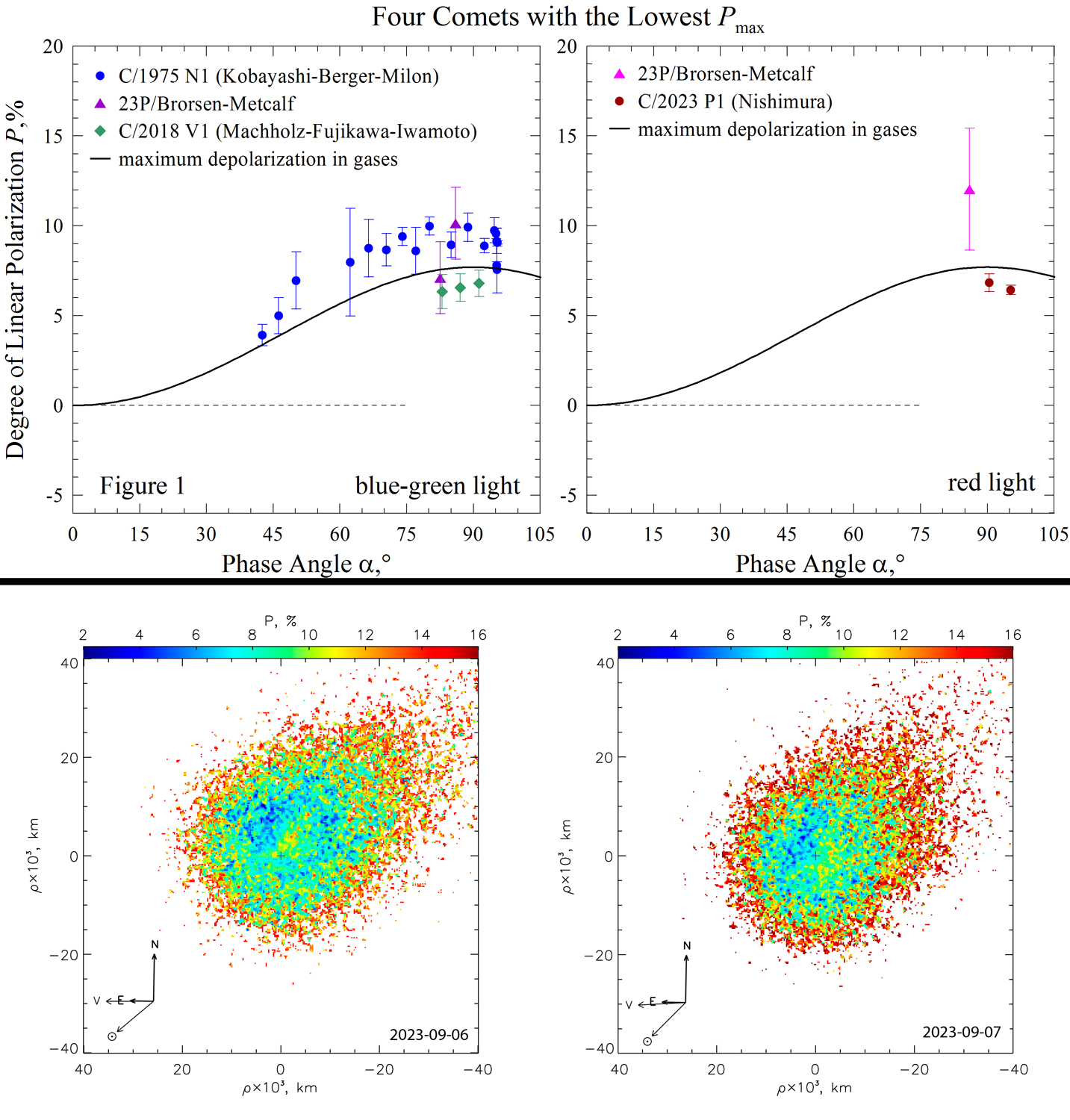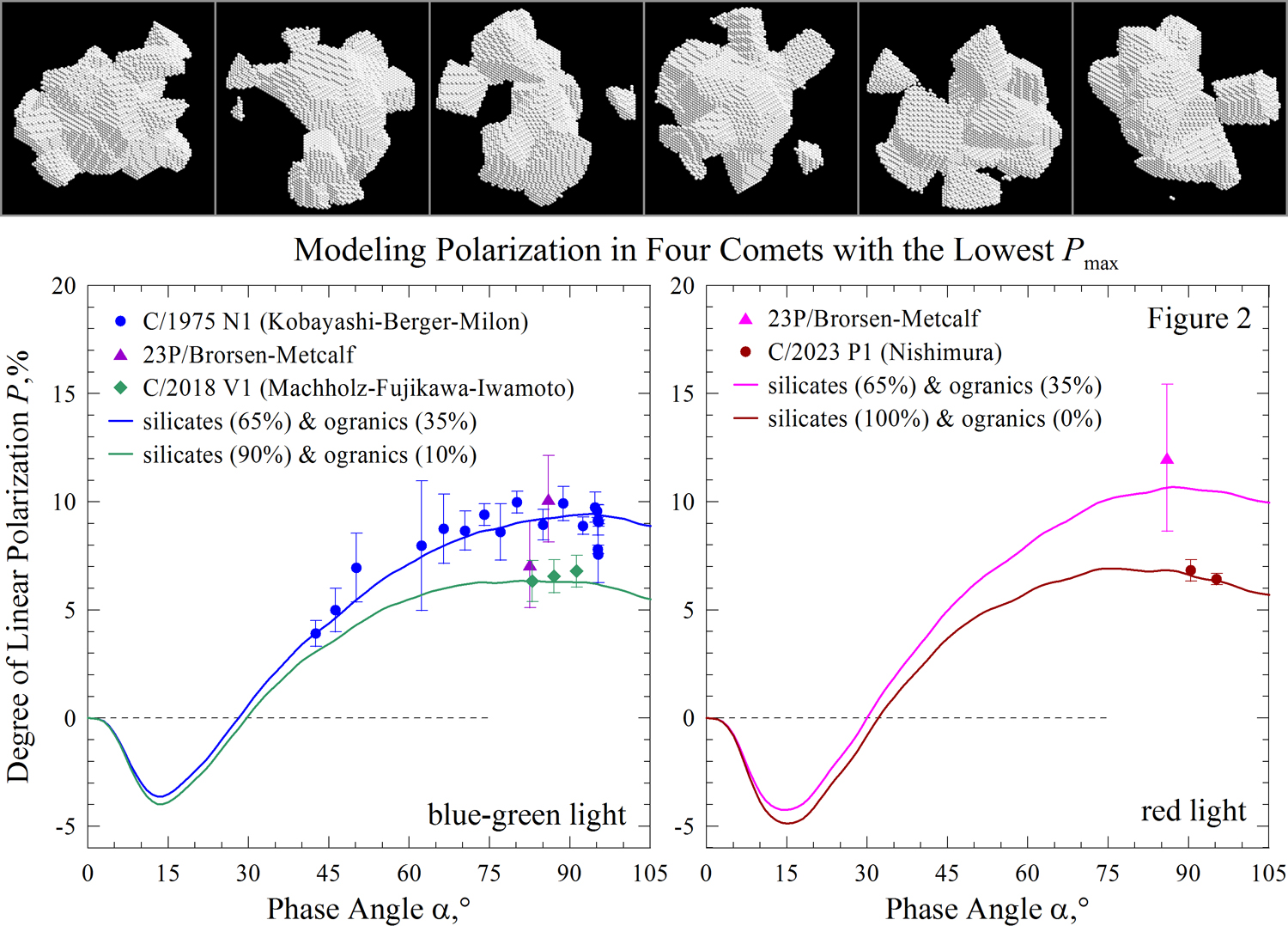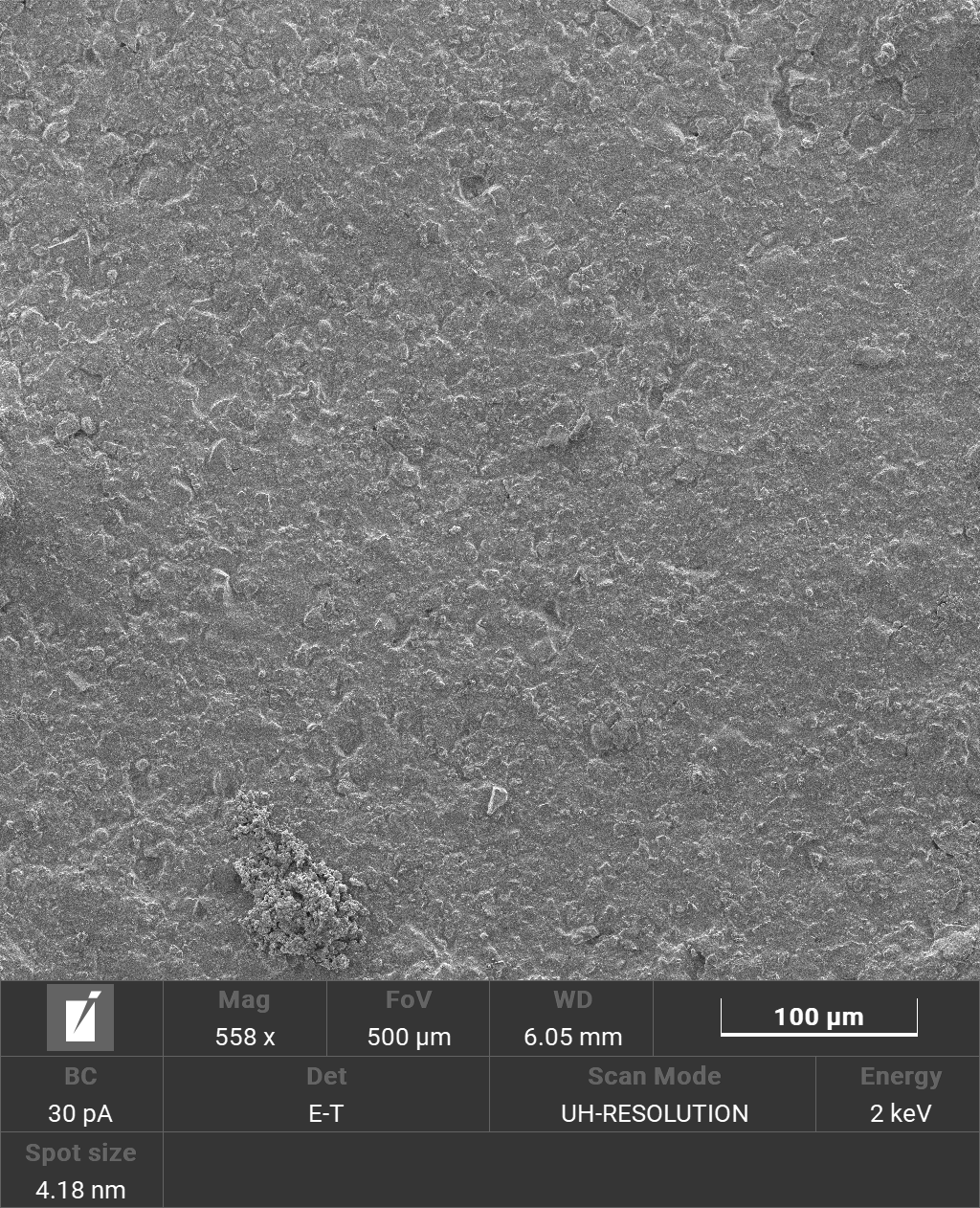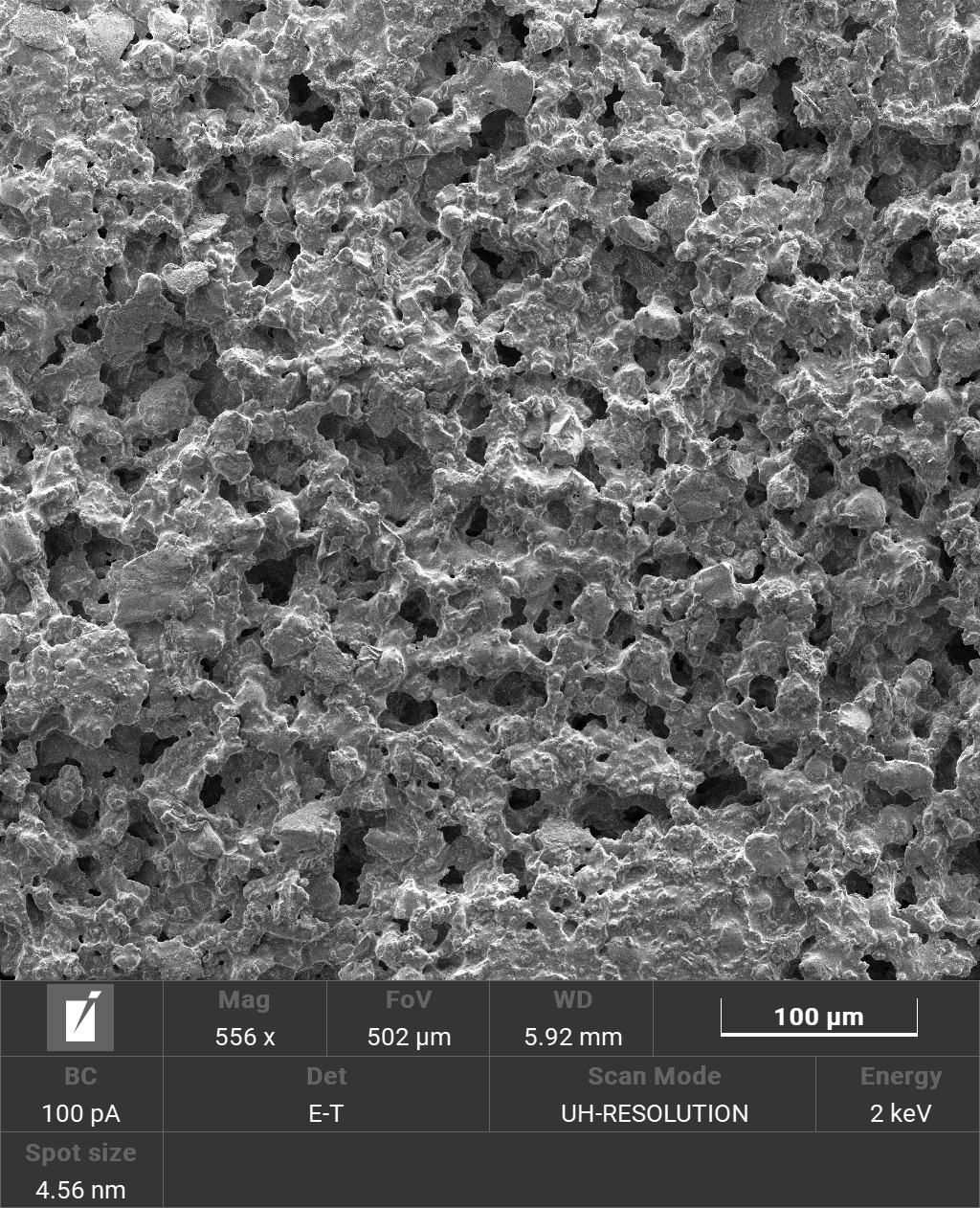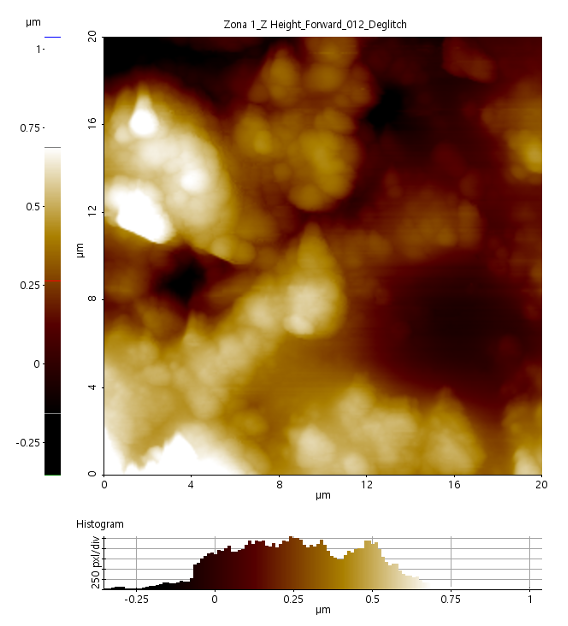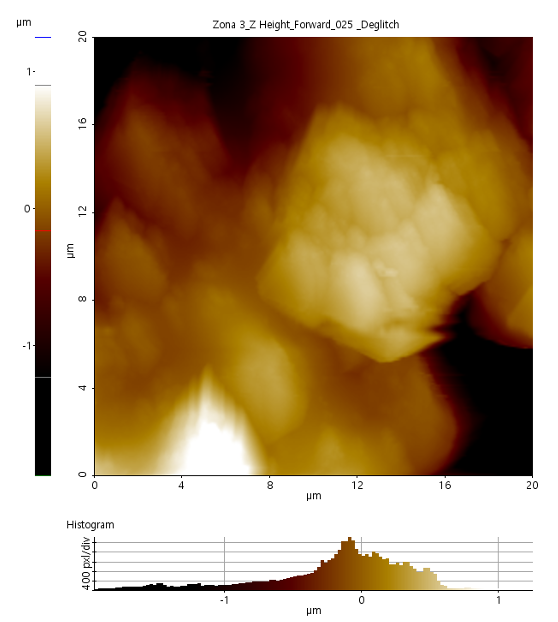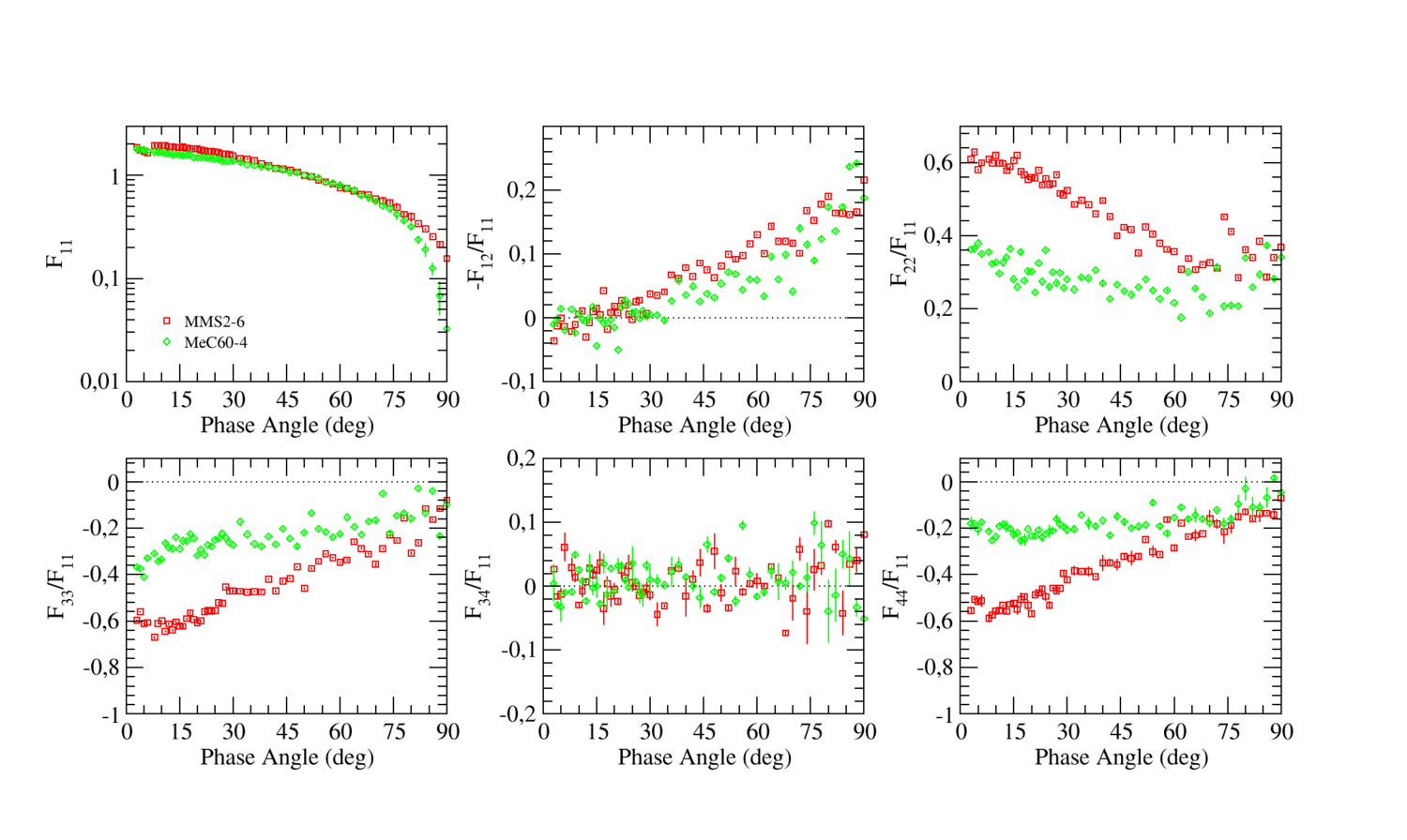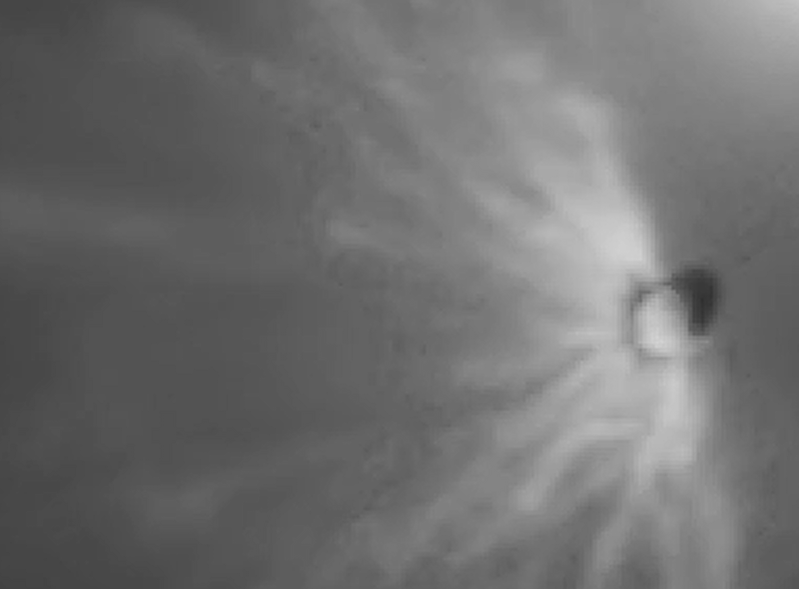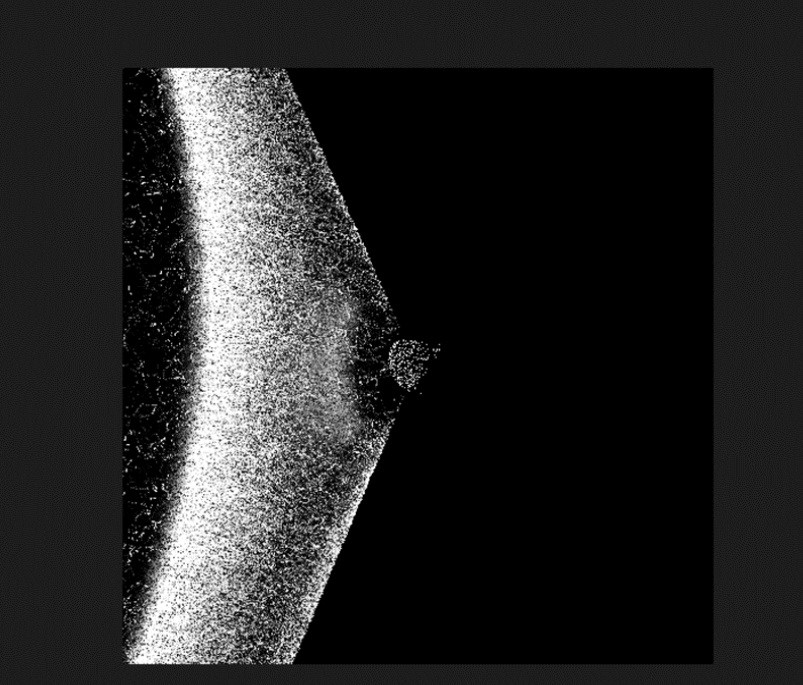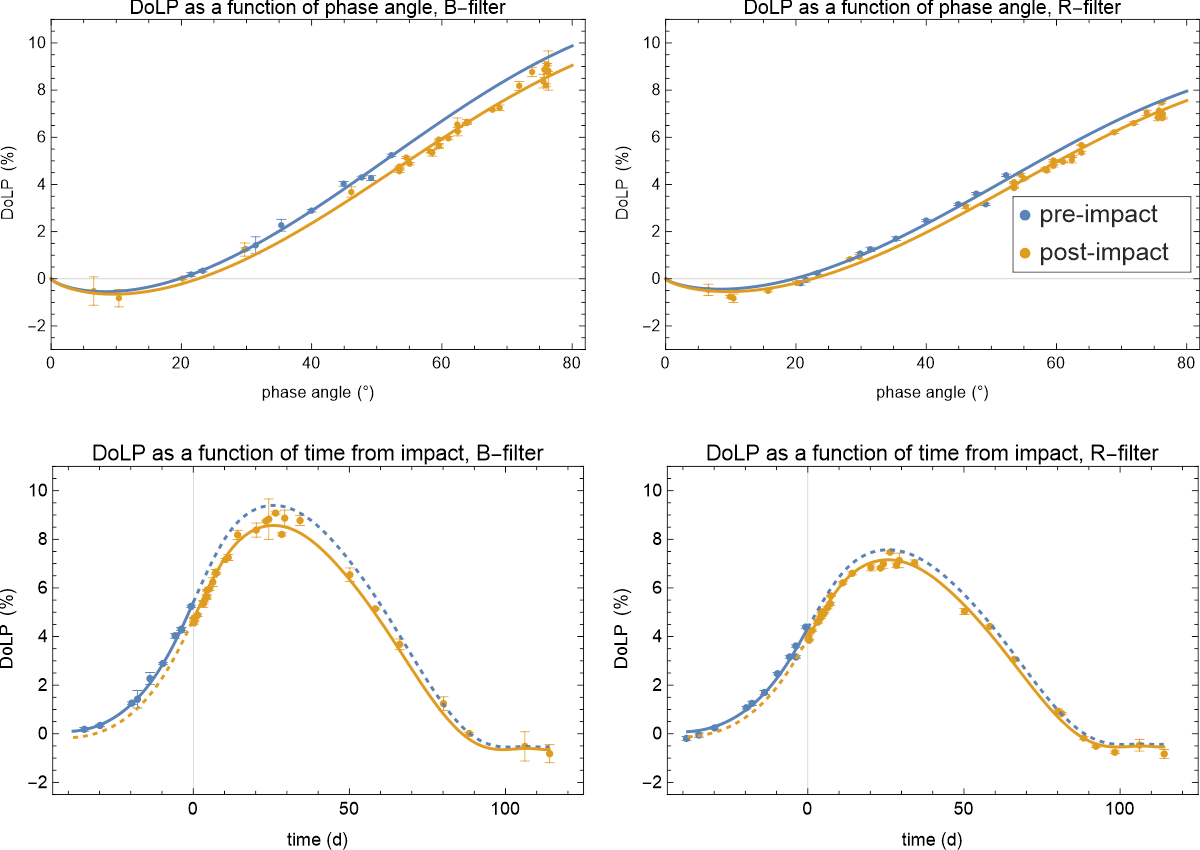In this talk, we will review the recent advances in photometric and polarimetric observations of asteroids.
For decades, photometry and polarimetry have been conventional methods employed in investigating asteroid surface properties. However, with the growing number of data from large surveys, we are now able to probe the diversity of the phase angle curves across different composition types and sizes of asteroids. In the recent years, a large number of polarimetric observations have also been obtained by various observatories across the globe, allowing to improve our understanding of the phase-polarization curve of asteroids and especially for near-Earth objects.
In photometry, the number of sky surveys has increased significantly. These surveys, serendipitously observing hundreds of small bodies (e.g [1, 2]), are obtaining photometric observations with consistent setups and photometric bands allowing to build reliable phase curves of hundreds of thousands of asteroids.
As an example, [3] analysed the observations obtained by the Asteroid Terrestrial-impact Last Alert System (ATLAS) survey [1] composed of four 50 cm telescopes located at different observatories surveying the sky to search for potentially hazardous near-Earth objects. In 2022, ATLAS published its first version of the ATLAS Solar System Catalog (SSCAT) consisting of over 125 million observations of 580,000 asteroids and comets [4]. Using the ATLAS data [1] analysed 127,012 phase curves of 94,777 asteroids and determined their H magnitude and G1 and G2 parameters. They analysed the distribution of G1 and G2 parameters for the different taxonomic types and found a correlation between the G1 and G2 parameters and the taxonomic type of the asteroids mainly following their albedo distribution. They were able to differentiate the X-type objects into their P-, M-, and E- component which display relatively similar spectral shape, but differs significantly in terms of their albedoes. They also showed that interlopers in dynamical families can be identified by analysing their G1 and G2 parameters.
More recently [5] used the observations from the Zwicky Transient Facility (ZTF) survey to analysed 3,245,908 observations of 122,675 asteroids. They used both the H, G [6] and the H, G1, G2 [7]. As in the previous work from [3], they found strong correlation of the Gs parameters with taxonomy. But, the most important innovation from [4] is the introduction of a new term in the H, G1, G2 accounting for the variation of viewing aspect of the asteroids. As this new term is dependent on the spin axis orientation, they were not only able to better constrain the H and Gs but also to determine the pole orientation of the modelled objects. They found that the pole orientation obtained using the phase curved agree withing 20-30° in average with the pole orientation obtained using detailed shape modeling.
In polarimetry, the Calern Asteroid Polarimetric Survey [8] recently published 2,100 single measurements for about 600 asteroids. This single survey significantly increased the number of polarimetric observations of asteroids as the largest catalog compiling observations obtained by many authors and many telescopes only contained 5,100 single measurements with observations starting since the early 1970s.
Most of the polarimetric observations are usually obtained in the V band or in the R band. However, recently [9] analysed polarimetric observations of asteroid obtained in the near-infrared. [9] used the 200 inch Palomar telescope with the WIRC+Pol instrument to obtained observations in the J and H band. In [9] they present their results for the S- and C- complexes. They showed that C-complex asteroids almost show no variation of their phase-polarization curve as a function of wavelength and could be used as calibrator as their wavelength dependence is less that those of stars. On the other hand, S-type objects show large variation with respect to wavelength consistent with previous trend observed in different bands in the visible. In another work [10], they analysed the so-called Barbarian asteroids that are showing an unusually large value of the inversion angle. They showed that the Barbarians are showing a drastic change in their phase-polarization curve as a function of wavelength and that even the inversion angle is varying significantly. This trend was already observed in the case of (234) Barbara by [11] and is confirmed for with those new observations for other Barbarians and at larger wavelengths.
In the recent years, a lot of focus has also been devoted to the observations of near-Earth objects (NEOs). NEOs can be observed at much larger phase angles than main-belt asteroids and thus display much larger value of the polarization. Asteroid like Phaethon, Ryugy or Bennu are showing polarization values as high as 40 to 50\%. On the other hands, high albedo objects like Nereus are showing polarization values as low as 1-2\% at similiar phase angles. This shows the high potential of using polarimetric observations at high phase angles to determine the albedo of near-Earth observations. Obtaining the albedo of NEOs is of high importance for planetary defense purposes as it allows to obtain an estimation of the size of the object which is of first importance to plan for mitigation strategies in case of the discovery of an impacting object.
[1] Tonry, J., Denneau, L., Heinze, A., et al. 2018, Publications of the Astronomical Society of the Pacific, 130, 064505
[2] Masci, F. J., Laher, R. R., Rusholme, B., et al. 2019, PASP, 131, 018003
[3] Mahlke, M., Carry, B., & Denneau, L. 2021, Icarus, 354, 114094
[4] https://astroportal.ifa.hawaii.edu/atlas/sscat/
[5] Carry, B., Peloton, J., Le Montagner, R., Mahlke, M., & Berthier, J. 2024, arXivpreprint arXiv:2403.20179
[6] Bowell, E., Hapke, B., Domingue, D., et al. 1989, Asteroids II, 524
[7] Muinonen, K., Belskaya, I. N., Cellino, A., et al. 2010, Icarus, 209, 542
[8] Bendjoya, P., Cellino, A., Rivet, J.-P., et al. 2022, Astronomy & Astrophysics, 665, A66
[9] Masiero, J. R., Tinyanont, S., & Millar-Blanchaer, M. A. 2022, The Planetary Science Journal, 3, 90
[10] Masiero, J. R., Devogèle, M., Macias, I., Jaimes, J. C., & Cellino, A. 2023, The Planetary Science Journal, 4, 93
[11] Devogèle, M., Tanga, P., Cellino, A., et al. 2018, Icarus, 304, 31
